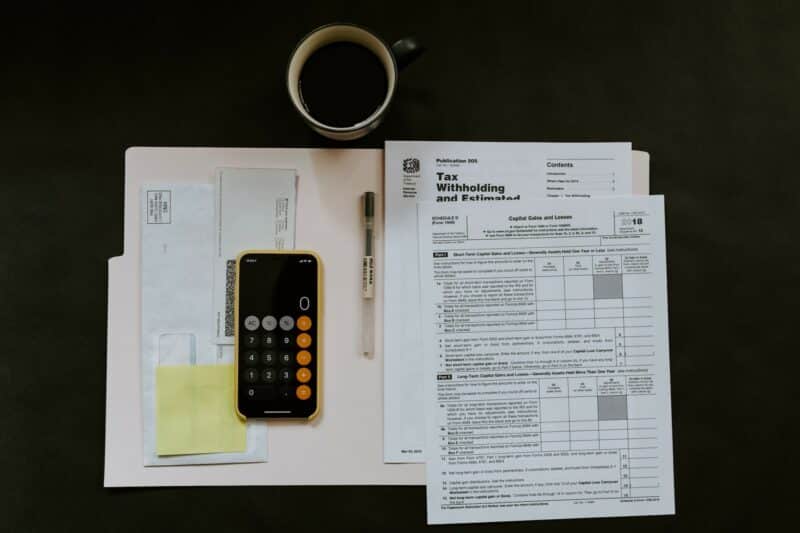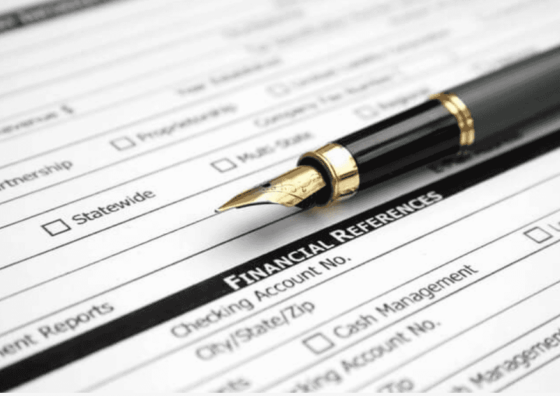Why is my tax return so low compared to last year, you wonder? No, you didn’t suddenly lose your mathematical skills. Namely, a few tax changes went into effect in 2021, and as a result, your refund for this year may be lower than in prior years.
Here’s all you need to know about tax returns and why they might be lower.
How Do Taxes Work?
Before we talk about the possible reasons why you only received a partial tax refund in 2022, let’s first review how taxes work.
When you file your taxes, you’re essentially telling the government how much money you made over the course of a year. Depending on your earnings and deductions, you may either owe money to the government or be owed a refund.
The exact amount of money you need to make in order to get a refund differs.
For example, a single person under 65 must file a tax return if they earned $12,550 or more during the year. If you’re under 65, married, and filing jointly, you need to make at least $25,100 to be required to file taxes.
The average tax refund in 2022 stands at $3,039, while in 2021, it amounted to $2,827.
Many people will have to submit tax returns to the federal government and their state since almost all US states impose income taxes on their residents (except for Alaska, Florida, Nevada, New Hampshire, South Dakota, Tennessee, Texas, Washington, and Wyoming).
You can also avoid paying taxes in certain situations.
Now that you understand how taxes work, there are a few things that could result in a lower-than-expected tax refund, which we’ll discuss next.
Why Is My Tax Return So Low in 2022?
While there are many reasons your tax refund could be lower than you anticipated, these are the most common:
Advance Child Tax Credit Payments
In 2021, the American Rescue Plan’s child tax credit was increased from $2,000 to $3,000 per child ($3,600 if the child is under the age of six).
Any couple that makes up to $150,000 and any single parent that makes up to $112,500 is eligible for the full child tax credit.
On that note, many families were given half up front between July and December (or $250–$300 per month), which resulted in a smaller write-off at tax time.
If, for example, they qualified for $3,000 in tax credit and got an advanced payment of $1,500, they will get the remaining $1,500 when filing a tax return, i.e., $500 less than the $2,000 credit available in 2021.
So, why was my tax refund reduced? In short, because you received some of it in advance through monthly payments.
The Child Tax Credit Letter 6419 shows how much of a tax credit you received in the previous year, which will give you an estimate of how much you can claim this year.
Also, bear in mind that avoiding child support shows on your tax refund, i.e. not paying the support lowers the tax refund.
Paused Student Loan Payments
As you know, in 2020, the U.S. Department of Education offered Americans with student loans the option to pause monthly payments. While this sounds like a great idea — and it was, for many people — it can result in a lower tax refund.
Why didn’t I get my full tax refund in 2022? It’s likely because you paused your student loan payments in 2020. Namely, zero payments equal zero interest on student debts.
For example, you may be able to deduct up to $2,500 in student loan interest from your taxes, lowering the amount you owe. However, you’ll also pay more taxes if you don’t get any deductions to lower your income. This will result in a smaller tax refund.
If you’re concerned that the re-establishment of loan collection rules will result in losing your tax refund, here’s what you can do:
- Get a refund for the administrative offset. If there’s no tax refund on the way, you might be entitled to reparations for collections that took place after March 13, 2020.
- Call your servicer to explore repayment plan options. Ask your loan servicer about income-driven repayment plans to see if you qualify. These plans may reduce or even eliminate your monthly payment depending on how many people live in your household and its adjusted gross income.
- Inquire about hardship loans. These usually come in the form of a small, short-term loan that can help you stay afloat until you get back on your feet.
Unemployment Benefits
Why are tax returns so low this year? The answer might lie in unemployment benefits. Namely, while in 2022, unemployment benefits were not taxable (for up to $10,200), if you received benefits in 2021, you will owe federal income taxes on the entire amount.
Given that unemployment benefits are taxable income, if you’re one of the people who didn’t have any taxes taken out of their unemployment payments in 2021, you could get a lower tax refund.
Treasury Offset Adjustment
The amount of your tax refund may have been lowered by the Treasury Offset Program in 2022. The aforementioned program is in charge of collecting outstanding bills owed to state and federal agencies.
Various state and federal agencies, like the Department of Education or child support, may have delinquent debts that require collection. They collect the bill from tax refunds, which reduces the amount of money people get back.
However, only certain types of bills qualify for a tax offset. For example, a private lender will not lower your tax refund if you have a late car payment bill.
How to Track Your Refund?
The best way to track your refund is by using the IRS’ “Where’s My Refund” tool, which you can find on the IRS website.
All you need to do is enter your social security number, filing status (single, married), and the exact amount of the refund you expect.
When you enter the required information, you’ll come across one of three status settings:
- Return Received: the IRS has received and is processing your tax return.
- Refund Approved: your return has been processed, and the IRS is preparing your tax refund. Your funds will be sent to your bank or by mail.
- Refund Sent: the IRS has sent the refund to your bank or delivered it by mail.
The IRS updates your status once a day, typically late at night.
How Long Does the IRS Take to Issue a Refund?
The average tax return time is 21 days. If you are still waiting for your refund after 21 days, the IRS may be facing delays because:
- You made some mistakes on your tax return.
- Your tax return is incomplete.
- You’ve been the victim of fraud or identity theft.
- You’re claiming the Additional Child or Earned Income Tax Credit.
- You filed Form 8379 (Injured Spouse Allocation), which takes 14 weeks to process.
- Your tax return requires further review.
- You filed a paper return, which takes six months to process.
So, why is my tax return so slow? The answer is likely one of the above.
On that note, if you want to get your refund faster, the best thing to do is file your taxes electronically. This way, the IRS will automatically process your return and send you your refund within 21 days.
You can also sign up for a direct deposit, which will ensure that your refund goes directly into your bank account. This is the fastest way to receive your refund.
Conclusion
As you can see, the IRS refunds in 2022 might be lower than your 2021 returns due to advance child tax credit payments, paused student loan payments, unemployment benefits, and treasury offset adjustments.
So, before you dwell on how the “IRS sucks,” make sure to track your refunds, and if you want to get them faster, file your taxes electronically and sign up for a direct deposit.
FAQs
Why is my state refund so low?
Your state refund amount may be less than what you filed because the state tax office has the right to recalculate your form if they find an error.
In addition, your refunds can be lower if you owe money for unpaid taxes, child support, student loans, or alimony.
What is the average tax refund?
The average refund for 2022 is $3,039, whereas in 2021, it stood at $2,827. This year the IRS received 145 million tax returns, and 66% were due a refund.
Anyone who hasn’t filed their 2021 tax returns yet, including those granted an extension until October 17, should submit their returns electronically to bypass any delays.
Why did I get so little on my tax return?
There can be many reasons. For example, if you received an advance child tax credit payment, your tax refund will be lower because your payments were an advance on your tax refund.
Other reasons include having paused student loan payments or owing taxes on unemployment benefits. You might also have had your tax refund lowered by the Treasury Offset Program, which collects outstanding bills owed to state and federal agencies from tax refunds.
To avoid asking yourself, “why is my tax return so low,“ make sure to track your refunds regularly.






